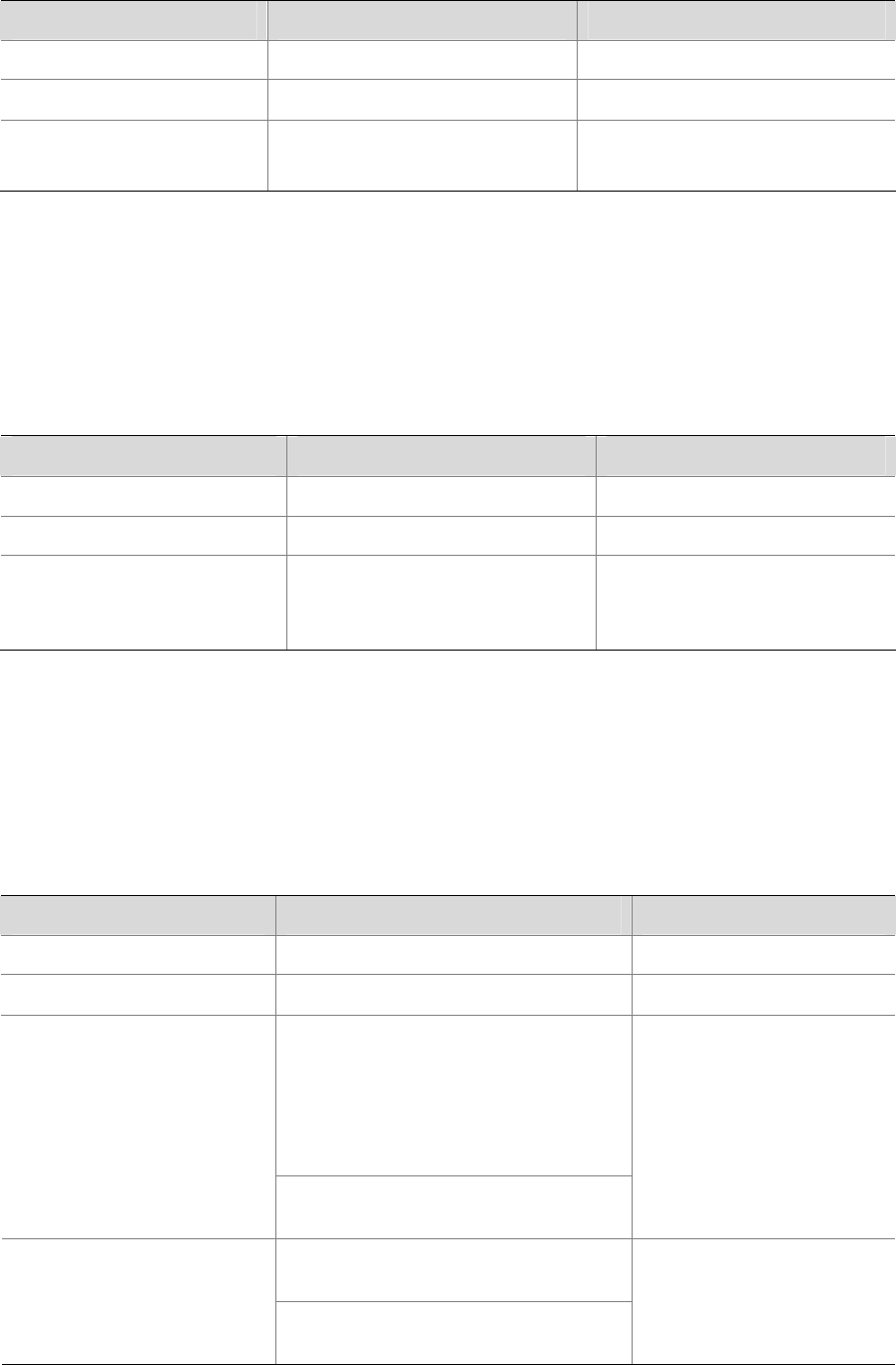
3-6
Follow these steps to configure RIP route summarization:
To do... Use the command... Remarks
Enter system view
system-view
—
Enter RIP view
rip
—
Enable RIP-2 automatic
route summarization
summary
Required
Enabled by default
Disabling the router from receiving host routes
In some special cases, the router can receive a lot of host routes from the same segment, and these
routes are of little help in route addressing but consume a lot of network resources. After a router is
disabled from receiving host routes, it can refuse any incoming host route.
Follow these steps to disable the router from receiving host routes:
To do... Use the command... Remarks
Enter system view
system-view
—
Enter RIP view
rip
—
Disable the router from
receiving host routes
undo host-route
Required
By default, the router receives
host routes.
Configuring RIP to filter incoming/outgoing routes
The route filtering function provided by a router enables you to configure inbound/outbound filter policy
by specifying an ACL, address prefix list, or route policy to make RIP filter incoming/outgoing routes.
Besides, you can configure RIP to receive only the RIP packets from a specific neighbor.
Follow these steps to configure RIP to filter incoming/outgoing routes:
To do... Use the command... Remarks
Enter system view
system-view
—
Enter RIP view
rip
—
filter-policy { acl-number | ip-prefix
ip-prefix-name [ gateway
ip-prefix-name ] | route-policy
route-policy-name } import
Configure RIP to filter
incoming routes
filter-policy gateway ip-prefix-name
import
Required
By default, RIP does not
filter any incoming route.
The gateway keyword is
used to filter the incoming
routes advertised from a
specified address.
filter-policy { acl-number | ip-prefix
ip-prefix-name } export [ protocol ]
Configure RIP to filter
outgoing routes
filter-policy route-policy
route-policy-name export
Required
By default, RIP does not
filter any outgoing route.


















